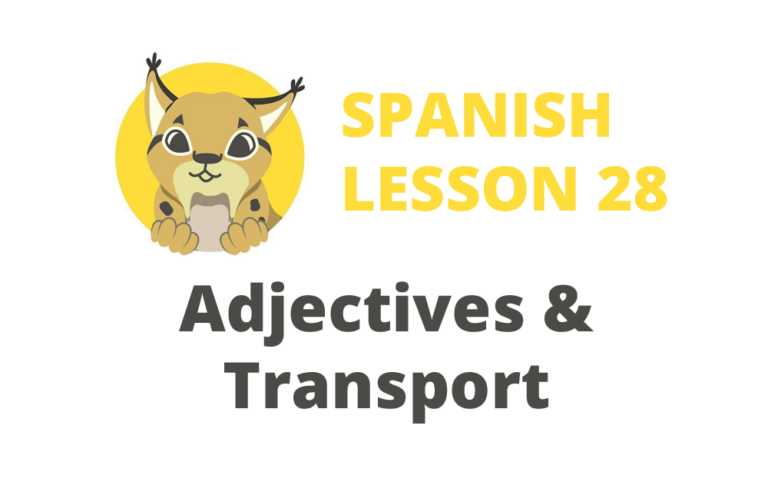This is the twenty-eighth lesson in our beginner level Spanish course and we will look at Spanish Adjectives and Transport.
In our previous lesson we learned some useful Spanish Transport Vocabulary and how to conjugate the Spanish Verb Ir (To go). We will use the same vocabulary in this lesson to practice Spanish Adjectives and Transport.
Adjetivos (Adjectives)
We have seen Spanish adjectives a few times already in the course. Adjectives are words that add description to other words (e.g. size and shape, age, colour, origin, material). In English, adjectives typically come before the nouns they describe whereas in Spanish adjectives come after the noun (e.g. long hair: pelo largo/hair long).
Masculine, Feminine, and Plural Nouns
We know that every noun (thing) in Spanish is either masculine or feminine (El or La). It is important to be aware of the gender of each noun you are using as other elements of your sentence will need to be altered according to this. Some adjectives change according to the gender of the word they describe and all change depending upon whether the word they describe is singular or plural.
With adjectives that end in –O you change their ending to –A if you are describing a female thing. When describing singular things with adjectives that don’t finish in –O you don’t change the ending of the adjective.
You add –OS if you are describing more than one masculine thing and –AS if you are describing more than one female thing. When describing more than one thing you add –ES to the adjective if it ends in a consonant and –S if it ends in a vowel.
Let’s review the Spanish Transport Vocabulary we learned in the previous lesson:
El tren: train
El avión: plane
El barco: ship
La bicicleta: bicycle
El coche: car
El autobús: bus
El metro: underground
El tranvía: tram
La motocicleta: motorbike

Next let’s learn some new Spanish adjectives useful for describing transport and travelling:
Rápido: fast
Lento: slow
Barato: cheap
Caro: expensive
Cómodo: comfortable
Incómodo: uncomfortable
Ecológico: ecological
Contaminante: contaminating
Peligroso: dangerous
Seguro: safe
Puntual: punctual
Let’s practice making some sentences using these Spanish Adjectives:
El avión es rápido: the plane is fast
Los aviones son rápidos: planes are fast.
El avión es muy contaminante: the plane is very contaminating
Los aviones son muy contaminantes: planes are very contaminating
El avión es rápido, pero muy contaminante: the plane is fast, but very contaminating.
Los aviones son rápidos, pero muy contaminantes: planes are fast, but very contaminating.
La bicicleta es lenta: the bicycle is slow.
Las bicicletas son lentas: bicycles are slow.
La bicicleta no es contaminante: the bicycle is not contaminating.
Las bicicletas no son contaminantes: bicycles are not contaminating.
Observe how some of the adjectives change their endings depending on the noun (thing) they describe. For example, Bicicleta (bicycle) is a feminine noun, so Slow for a bicycle is Lenta. Coche is a masculine noun, so Slow for a car is Lento.
In our next lesson we will practice more with Spanish adjectives. We will learn some useful structures for making comparisons in Spanish.





